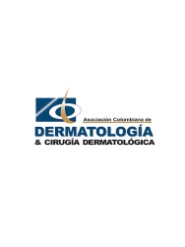Ansiedad y piel - Factores psicosomáticos
Palabras clave:
estrés, Terapia Racional Emotivo Conductual, pensamiento irracional, psoriasis, dermatitis atópica, vitiligo, alopecia areataResumen
La asociación entre factores psicológicos y diferentes sistemas del organismo ha sido evidenciada, y la piel no es una excepción. Para ratar de corroborar dicha asociación, se realizó un estudio aplicando el modelo psicológico de la Terapia Racional Emotivo-Conductual (TREC), en 20 pacientes que presentaban algunas de las enfermedades dermatológicas en las cuales se ha observado que el estrés tenga alguna participación en su aparición y/o exacerbación.
Se utilizó el cuestionario denominado Escala de Actitudes y Creencias, que mide la rigidez del individuo (pensamiento irracional) frente a cómo percibe su enfermedad, comparada con un grupo control, en quienes se había estandarizado previamente dicha prueba.
Los resultados muestran diferencias significativas en la percepción del grupo experimental (pacientes), comparada con el grupo control, respecto a la baja tolerancia a la frustración y a la comodidad, confirmando una vez más la asociación entre la interpretación del evento estresante y la enfermedad.
Biografía del autor/a
Leonor I. Vega, Saint Peter's College
Psicóloga, Profesora Titular de Psicología, Saint Peter's College, New Jersey (USA).
María Isabel Barona, Universidad del Valle
Docente Dermatología, Universidad del Valle, Cali.
Referencias bibliográficas
https://doi.org/10.1210/jcem-6-2-117
2. Lega LI, Lega Siccar J. Influencia de los factores emocionales en la colitis ulcerativa. Colombia Med 1994, 25:15-17.
3. Panconesi E, Hautman G. Psychophysiology of stress in Dermatology . En: Dermatologic Clinics, W.B. Saunders 1996, 14:399-421.
https://doi.org/10.1016/S0733-8635(05)70368-5
4. Besedowsky H, Del Rey AE, Sorkin E. lmmuneneuroendocrine interactions. J lmmunol 1985, 135:750s-754s.
5. Lotti T, Hautmman G, Panconesi E. Neuropeptides and skin. J Am Acad Dermatol 1995, 33:482-496.
https://doi.org/10.1016/0190-9622(95)91395-5
6. Farber EM, Nall ML. The natural history of psoriasis in 5600 patients. Dermatology 197 4, 148: 1-18.
https://doi.org/10.1159/000251595
7. Gupta MA, Gupta AK, Kirby S, et al. A psychocutaneous profile of psoriasis patients who are stress reactors: A study of 127 patients. Gen Hosp Psychiatry 1989, 11 :166-173.
https://doi.org/10.1016/0163-8343(89)90036-4
8. Jordan JM. Atopic dermatitis: Anxiety and conditioned scratch responses. J Psychosom Res 1974, 18:297-299.
https://doi.org/10.1016/0022-3999(74)90047-6
9. Withlock RA. Psychophysiological Aspects of Skin Disease. Philadelphia, WB Saunders, 1976.
10. Can non WB. The emergency function of the ad renal medulla in pain and major emotions. Am J Physiol 1914; 33:356-372.
https://doi.org/10.1152/ajplegacy.1914.33.2.356
11. Moberg G P. Biological response to stress: Key to assessment of animal well being. En: Moberg GP (ed): Animal Stress, Bethesda, Waverly Press, 27-49, 1986.
https://doi.org/10.1007/978-1-4614-7544-6_3
12. Ellis A. Rational Psychotherapy: J Gen Psychol 1958; 59:35-49.
https://doi.org/10.1080/00221309.1958.9710170
13. Ellis A. A sadly neglected element in depression: Cognitive Therapy and Research 1987, 11:121-146.
https://doi.org/10.1007/BF01183137
14. Ellis A. Reason and emotion in psychotherapy: revised and updated. Birch Lane (ed), New York, 1994.
15. Lega LI, Caballo VE, El lis A. Teoría y práctica de la terapia racional emotivo-conductual. Madrid, Siglo XXI (eds), 1997.
16. Ellis A. Expanding the ABC's of RET. En: Freeman and Mahoney (eds). Cognition and Psychotherapy, Springer, New York, 1984.
17. Basurto de García S, Lega LI. Diferencias de generación y sexo en el pensamiento irracional de universitarios colombianos y sus padres. Memorial Proceedings of the World Congress of Behavioral and Cognitive Therapies, México, UNAM, 1998.
18. Burgess PH. Toward resolution of conceptual issues in the assessment of belief systems in rational-emotive therapy. J Cognitive Psychother Ann lnternat Quarterly 1990, 4:171-184.
https://doi.org/10.1891/0889-8391.4.2.171
19. Caballo VE, Lega LI, Gonzalez S. Factor analysis of a back translation Spanish version of the Scale of Attitudes and Beliefs (SAB) Comunicación presentada en el 30th Annual Convention of the Association for the Advancement of Behavior Therapy, New York , Nov. 1996.
20. Brislin R. Cross-cultural research methods. Wiley (eds), New York, 1973.
21. Statistic Package for the Social Sciences (SPSS), 1998.
22. Mason JW. Over-all hormonal balance as key to endocrine function. Psychosom Med 1968, 30: 791-808.
https://doi.org/10.1097/00006842-196809000-00033
23. Hardy GE, Cotterill JA. A study of depression and obsessionality in dismorphophobic and psoriatic patients. Br J Psychiatry 1982, 140:19-22.
https://doi.org/10.1192/bjp.140.1.19
24. Matussek P, Agerer D, Seibt G. Agression in depressives and psoriatics. Psychother Psychosom 1985, 43:120-125.
https://doi.org/10.1159/000287868
25. Farber EM, Nickoloff BJ, Recht B, et al. Stress, symmetry and psoriasis: Possible role of neuropeptides. J Am Acad Dermatol 1986, 14:305-311.
https://doi.org/10.1016/S0190-9622(86)70034-0
26. Panconesi E. Stress and Skin Diseases. Psychosomatic Dermatology. Philadelphia, JB Lippincott 1984, 94 -179.
https://doi.org/10.1016/0738-081X(84)90050-6
27. Panconesi E, Hautmann G. Aspectos psicosomáticos de la dermatitis atópica. Monografías de Dermatología 1992, 5: 428-439.
28. Griffin JFT. Stress and immunity: A unifying concept. Veter lmmunopathol 1989, 20:263-312.
https://doi.org/10.1016/0165-2427(89)90005-6
29. Greenberg SI. Alopecia areata: A psychiatric survey. Arch Dermatol 1955, 72:454-457.
https://doi.org/10.1001/archderm.1955.03730350056010
30. Koo JY, Shellow WVR, Hallman CP, et al. Alopecia areata in increased prevalence of psychiatric disorders. lnt J Dermatol 1994, 33: 849-850.
https://doi.org/10.1111/j.1365-4362.1994.tb01018.x
31. Al'Abadie MSK, Senior HJ, Bleehen SS, et al. Neuropeptide and neuronal marker studies in vitiligo. Br J Dermatol 1994, 131 :160-165.
https://doi.org/10.1111/j.1365-2133.1994.tb08486.x
32. Porter JR, Beuf AH, Lerner A, et al. Psychosocial effect of vitiligo: A comparison of vitiligo patients with "normal" control subjects, with psoriasis patients, and with patients with other pigmentary disorders. J Am Acad Dermatol 1986; 15:220-224.
https://doi.org/10.1016/S0190-9622(86)70160-6
33. Kent G, Mohammed Al'Abadie. Psychologic effects of vitiligo: A critica! incident analysis. J Am Acad Dermatol 1996; 35:895-898.
https://doi.org/10.1016/S0190-9622(96)90112-7
Cómo citar
Descargas

Descargas
Publicado
Cómo citar
Número
Sección
| Estadísticas de artículo | |
|---|---|
| Vistas de resúmenes | |
| Vistas de PDF | |
| Descargas de PDF | |
| Vistas de HTML | |
| Otras vistas | |






